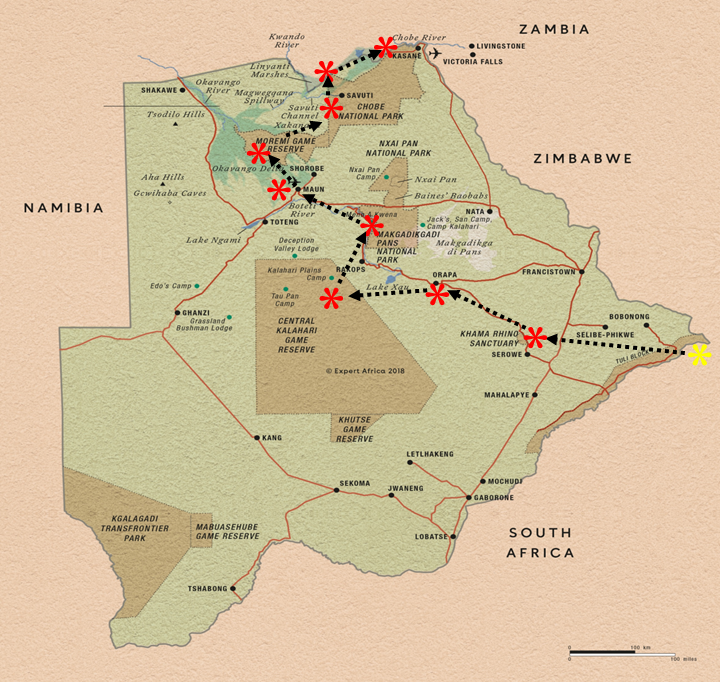
Our last stop in Chobe National Park was Serondela, or Chobe riverfront, located in the extreme Northeast of the park along the Chobe River and across the border from Namibia’s Caprivi Strip.
Getting to the Chobe riverfront involved driving over 100 km on a sand track road (hopefully you watched the video in the last post) that deters mosts people from making it up to the Linyanti section of the Park. In case you didn’t watch that video, here is a memorable shot of the sand track road:
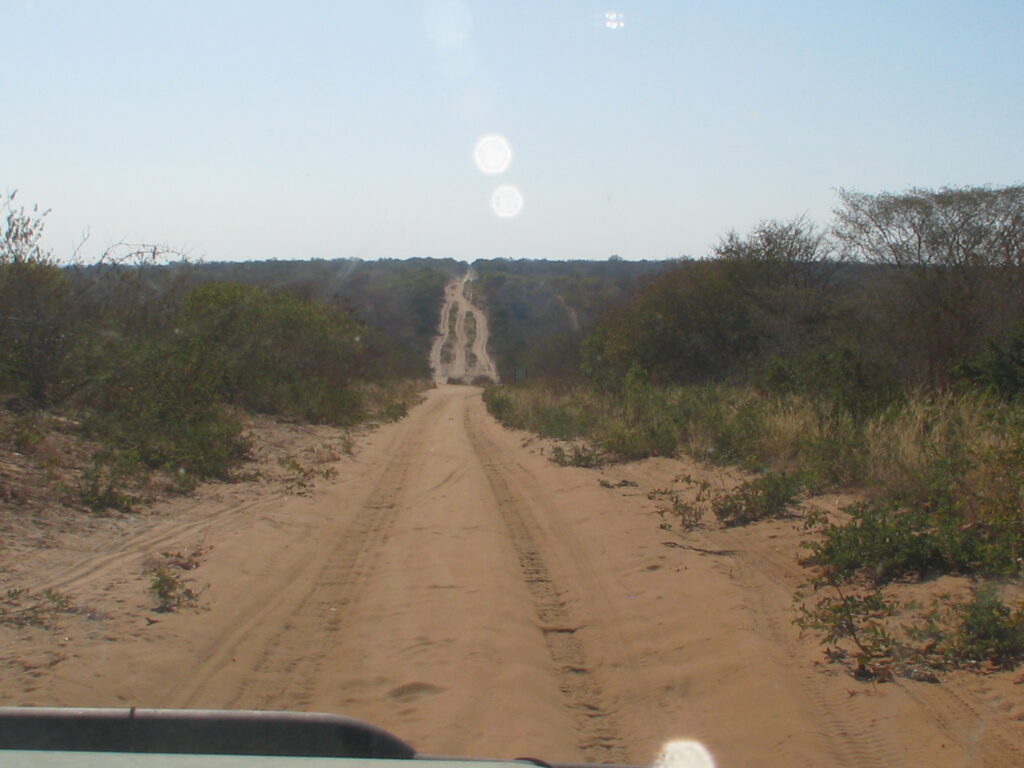
En route to the riverfront you actually leave the Park for a while and pass through a few small villages before entering back into the Park to the riverfront section. We stopped in one village “tuck” shop, as they call them (small roadside shop with a few essential and some non-essential foods and drinks), and learned of a produce farm out back. We took advantage of the opportunity to stock up on some fresh farm produce.
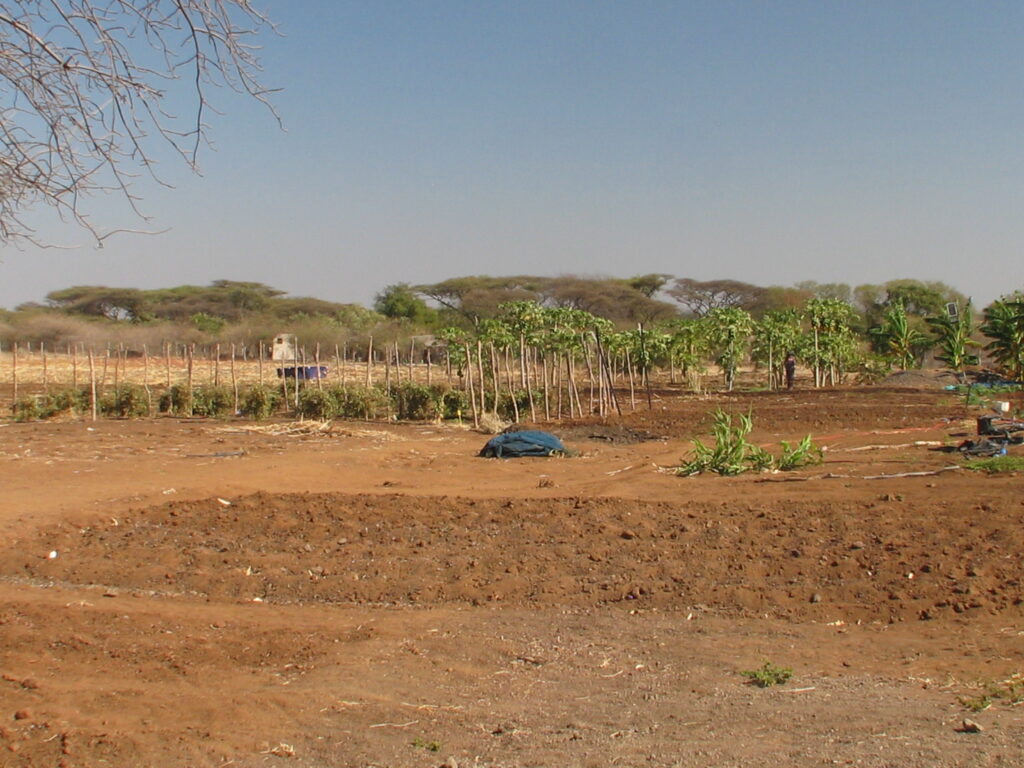
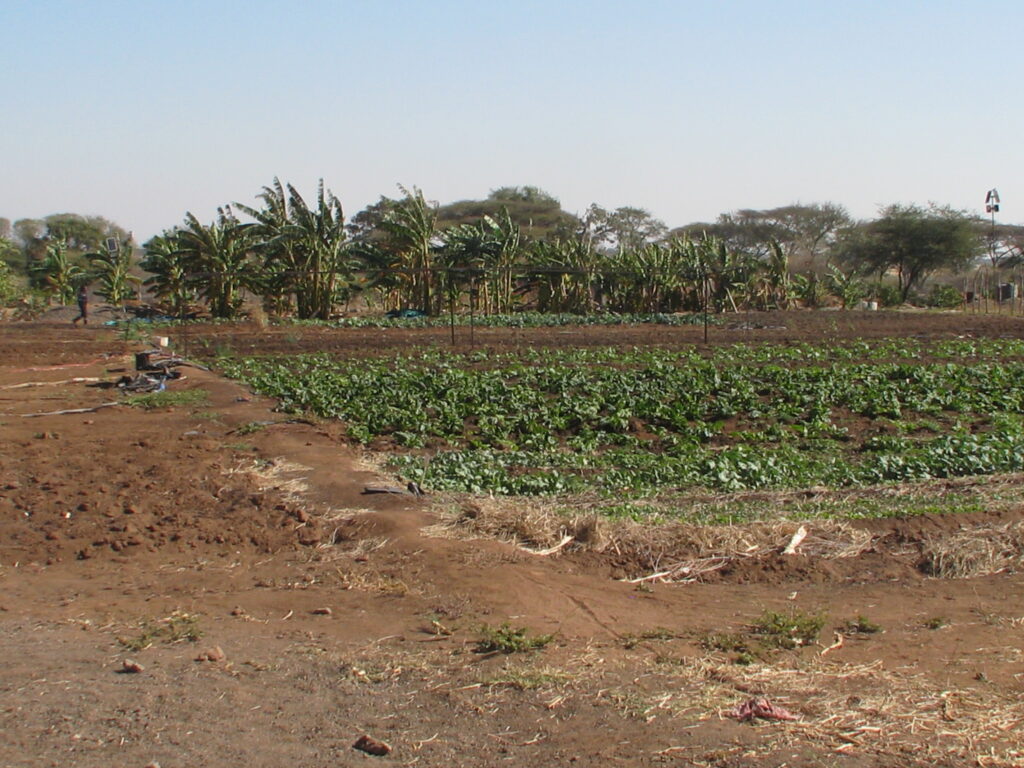
Indeed, you can’t get any fresher, as the workers went out into the garden patches and picked our vegies, including a massive head of spinach (equal to probably 4 heads in the US stores), an equally massive head of rape (like kale), a bag of small tomatoes, and a small bag of onions. How much do you think this cost? 47 Pula, which translates to a little over 2 USD. Crazy! I gave her 100 Pula, which still seemed like a rediculous bargan. Meanwhile, while the gardeners were out picking the vegies, I gave a couple of colored pencils to a small child (perhaps 4-5 years old) of one of the workers, Mark donated a sheet of art paper, and Nancy offered some coloring instruction to the young, very appreciative pupil:
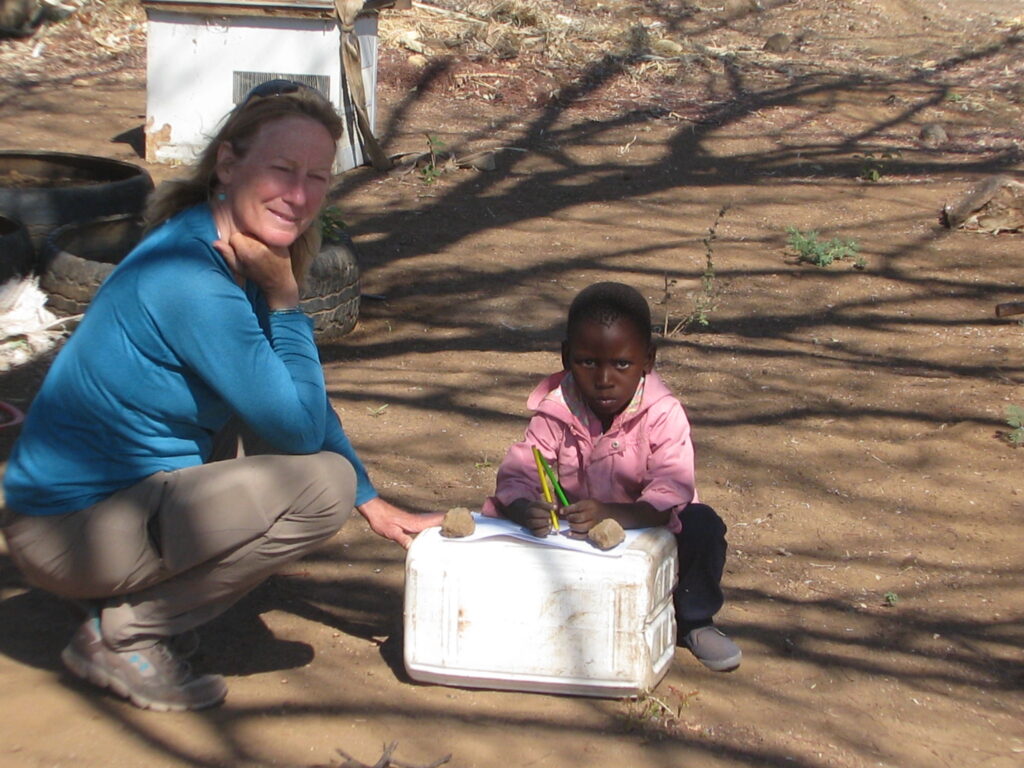
The obvious central feature of this section of the Park is the Chobe riverfront and adjacent woodlands. The Chobe River is a major watering spot for wildlife, especially in the dry season from May to October, with one of the densest wildlife concentrations in Africa, both on land and water. Being close to the town of Kasane and not far from Victoria Falls, which is situated just downstream from Kasane, this is Chobe’s most visited section. And while the high tourist density detracts from the appeal of the Chobe riverfront, even the large numbers of other safari vehicles and googling tourists can’t take away from the truly phenomenal wildlife spectacle of the Chobe riverfront during the dry season.
The Chobe River itself this time of year is in a receding flood stage, so the channel itself is still full and the adjacent flooplains are a mosaic of flooded side channels, pools and marshes interspersed with grasslands and the ocassional island of trees. A month from now the waters will have receded enough that only the main channel and a few of the major side channels will have water. But for our visit, it was a water wonderland, as shown here:
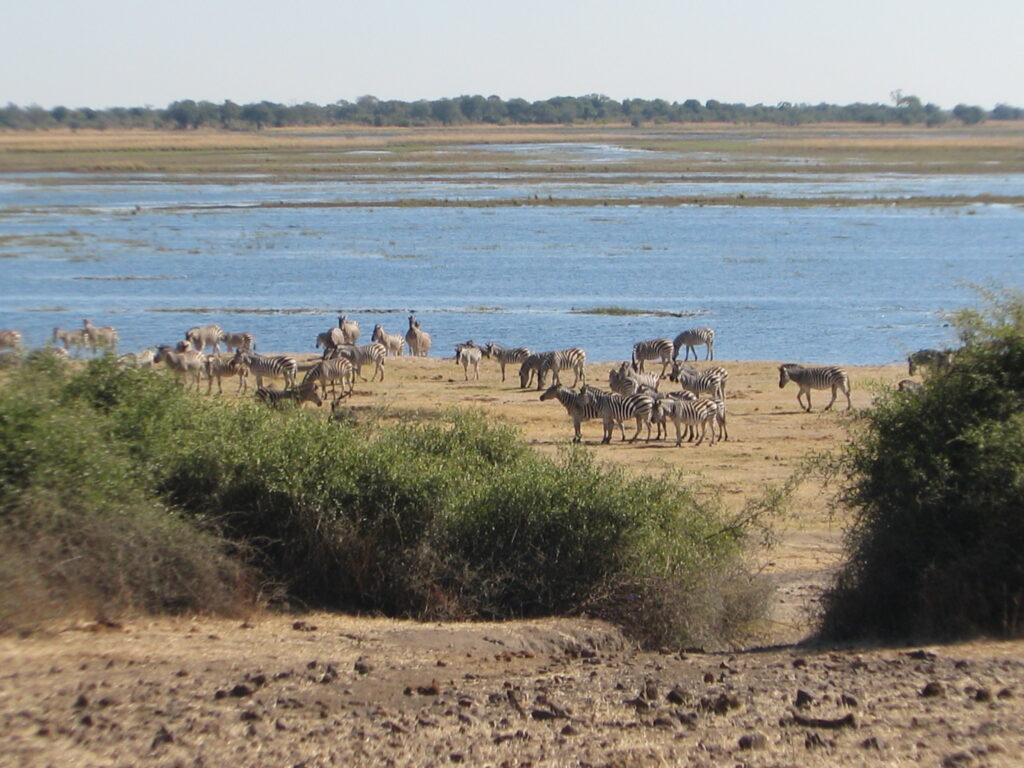

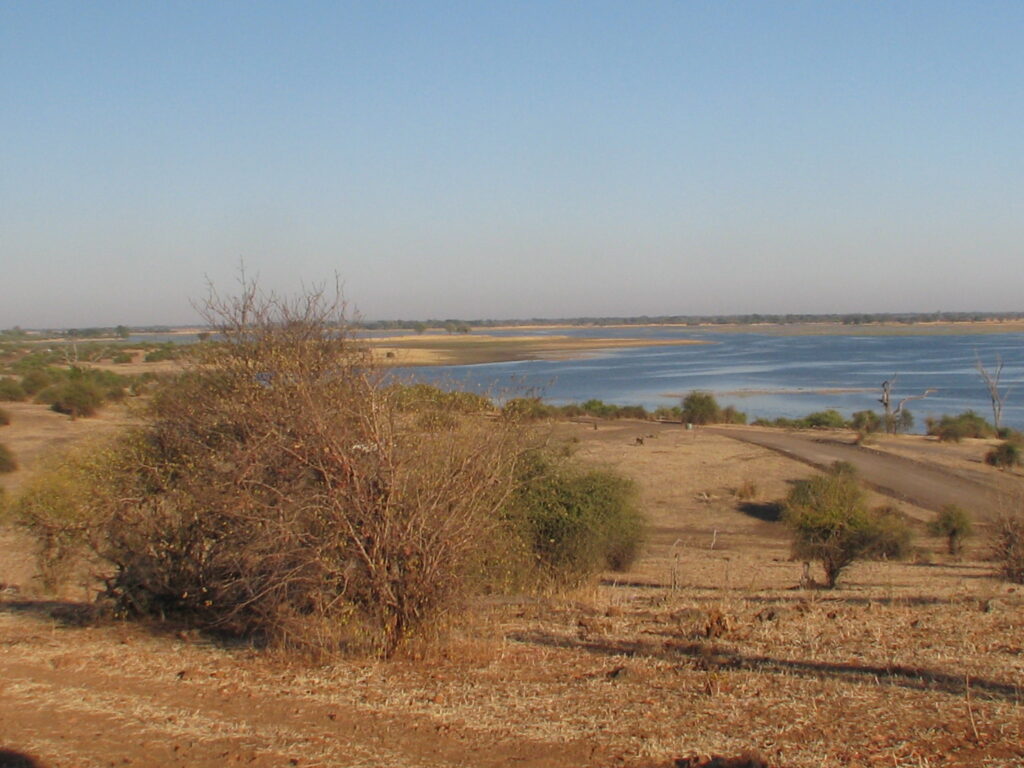
The Chobe riverfront isn’t all just about the River itself; rather, it is the adjacent uplands that host the large numbers of wildlife that sleep and eat on land and simply come to the river for a drink every so often. So, much of the “action” so-to-speak is in the zone immediately adjacent to the river. We spent most of our time driving up and down the River in this riverfront zone. The closer you are to the River, the more “beat down” the vegetation is from all the overbrowsing of the concentrated animals. In places it even looks like a dead zone, but believe it or not these plants will mostly bounce right back with the onset of the wet season in November. As you move farther away from the River into the uplands the woodlands take on a very different look and become much denser. It is worth noting, as I was reminded, that historically the Chobe riverfront hosted a forest of teak and ebony trees, but most of these trees were logged out years ago before the area became a national park and the high concentration of browsing animals today keeps the forest from reestablishing. Here is a series of photos to show the varied uplands and transition to “greener pastures” as you move farther away from the river:
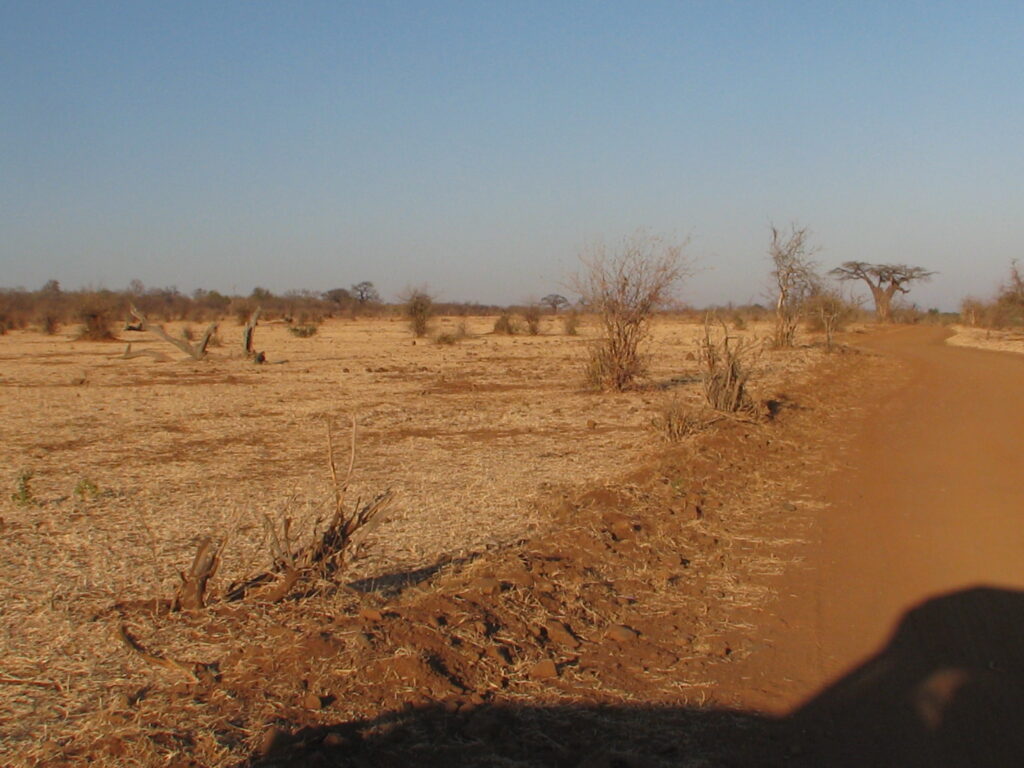
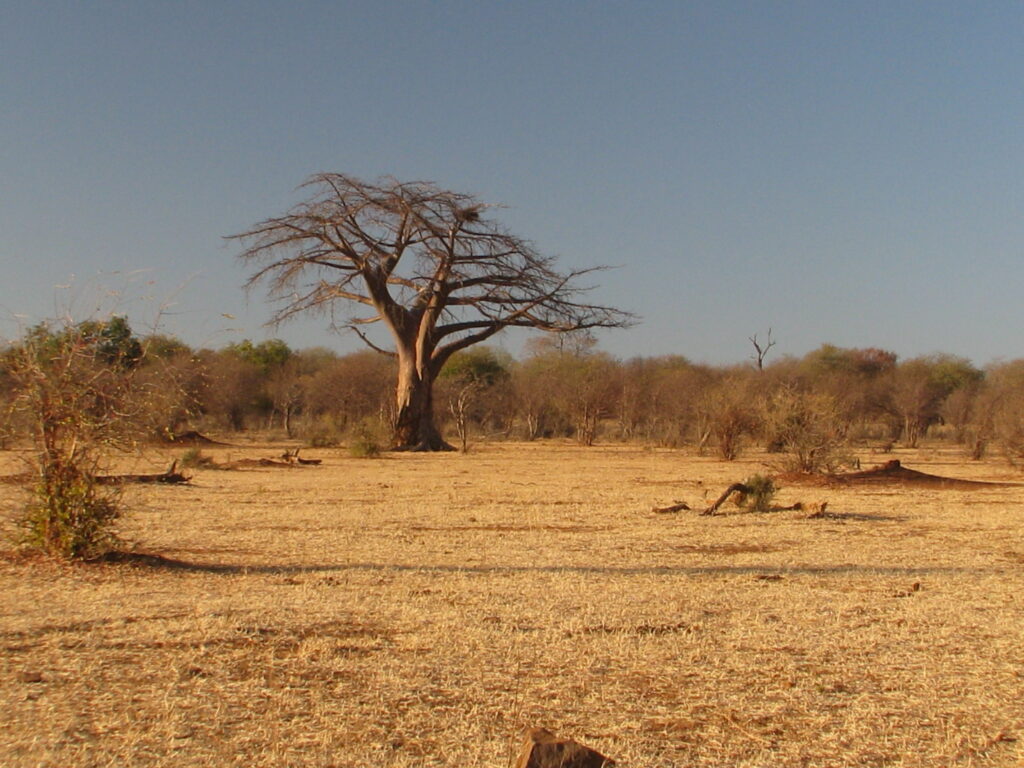
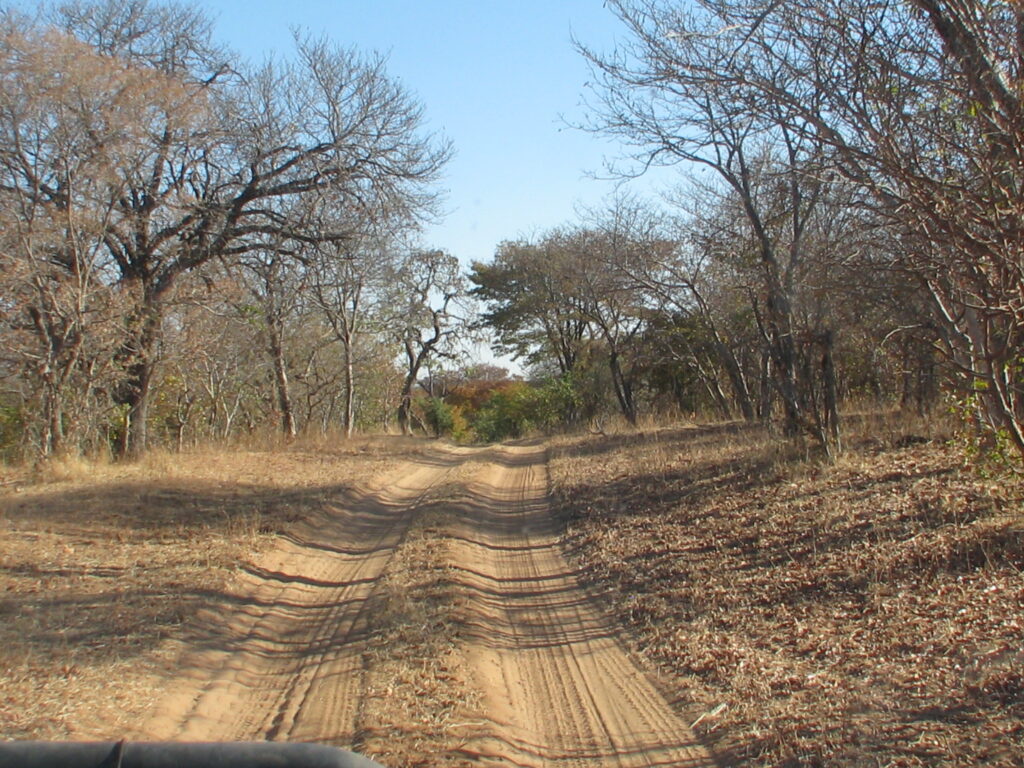

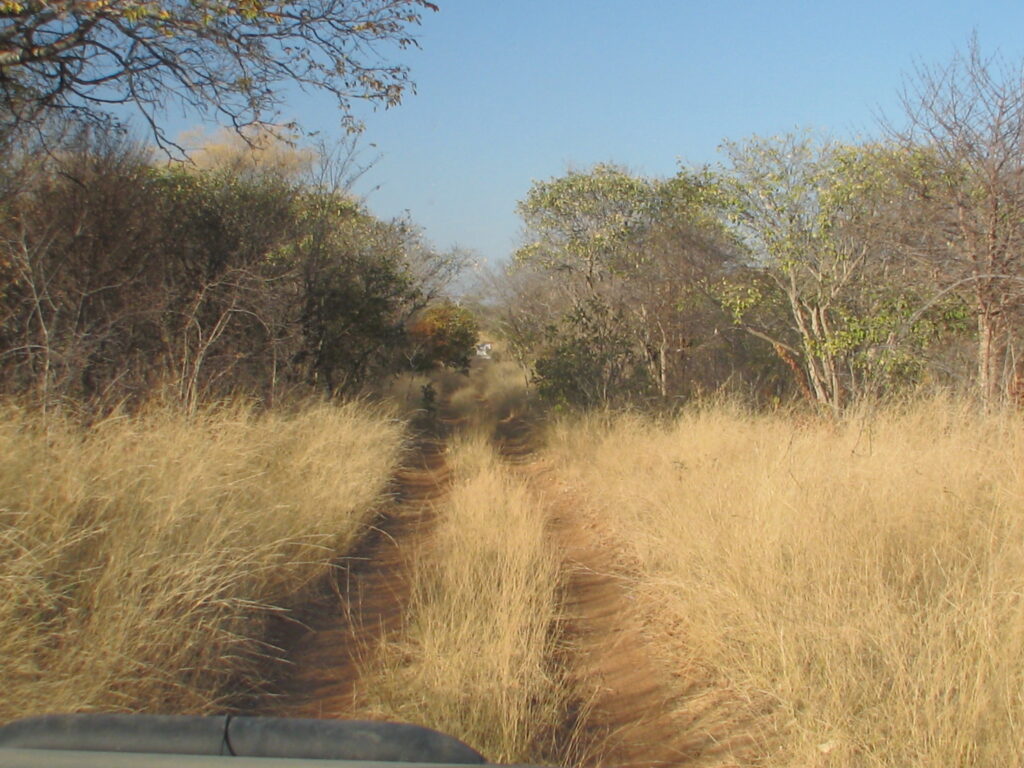
We camped in the public campsite at Ihaha right along the riverfront. Once again, we had the usual campsite accommodations, but this time with a view over the river, as shown here:
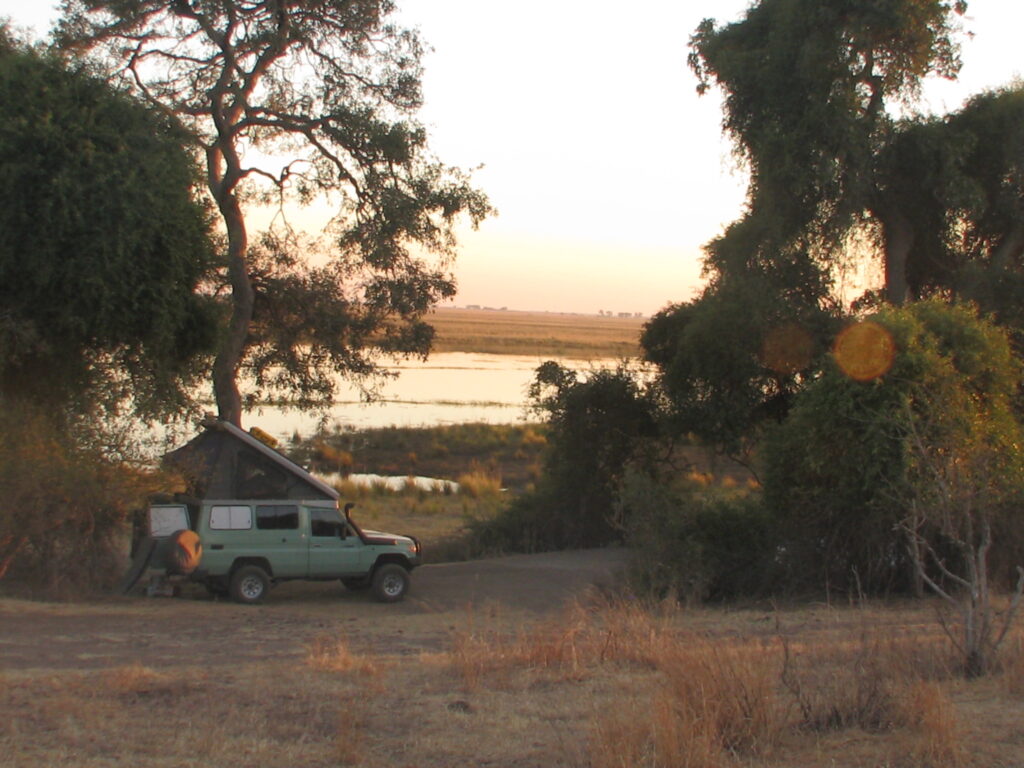

One of the outstanding wildlife observations we had along the riverfront was an encounter with a pair of elusive and secretive leopards that graced us with their presence on open ground and in daylight. The encounter was all to brief and a bit frenzied, but nonetheless a great sighting to see these most beautiful creatures. Here are the only 2 good shots I got of them:

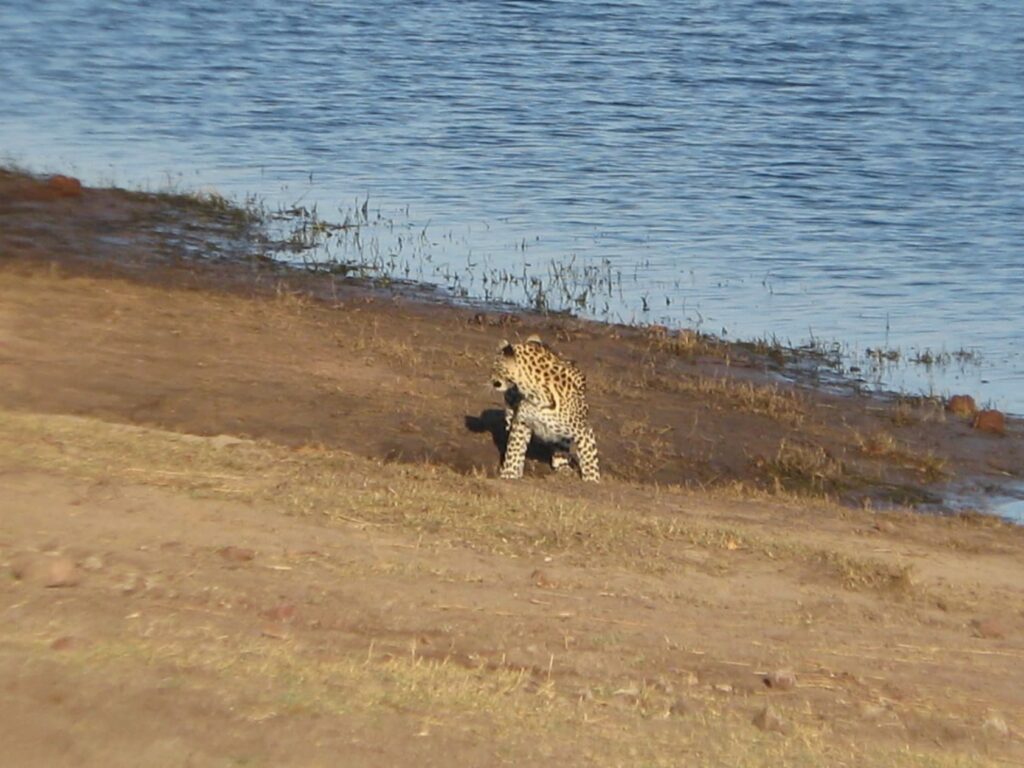
The only downside to this event was the rush of safari vehicles that converged on the site out of nowhere, making it a less than private experience. It never ceases to amaze me how we are driving along, seeing either no other vehicles or the ocassional safari vehicle and then, upon the sighting of any of the big cats, out of nowhere and within a minute or two a dozen safari vehicles descend on the location. Of course, all the safari guides are in communication with each other, so as soon as any one of them spots a big cat they instantly communicate their location – I just can’t figure how they all get there so fast when they are nowhere in sight. Of course, they share these sightings with each other so that they can all almost guarantee their customers that they will see the big cats.
One of the outstanding “negative” wildlife encounters we had along the riverfront was the invasion of our camp by a troop of very nasty baboons. We left the Green Dragon in camp and went for our usual evening drive together in Mark and Kirtsten’s vehicle. Even though we had seen the baboons near our campsite before leaving, we didn’t think it a problem to leave our rooftop tent up and our drop-down table in the down position. We left no food outside or anything else that you would think could attract the baboons. We left our metal table and lounge chairs out as usual. Well, when we returned from our drive, we found that the Green Dragon had been vandalized by the baboons. They bent over the side mirrors and radio antennae, broke the wire supports for the drop-down table (they must have been jumping up and down on it to break the wires), tore up the rain fly awning of the tent, and, worst of all, shit all over everything. There was baboon shit smeared on every surface of the vehicle and the lounge chairs. It was as if they were pissed off because they couldn’t get into the vehicle to steal the food so they crapped all over it instead in an act of vengeance. Lesson learned – don’t leave anything at all out or exposed!
On the positive side, the Chobe riverfront has an amazing number and variety of animals. Perhaps most noteworthy was the huge number of greater Kudo and giraffes that we saw. But perhaps the most memorable wildlife observation of all was the elephant population. Along the riverfront there were dozens and dozens of elphant herds, mostly organized into matriarchal units with an amazing number of baby elephants. The “big boys”, as we would call them, were present as well but in low numbers, and we figured that they must have been kept extremely busy to produce as many babies as we saw. The photo gallery below has some of the better pictures of the wildlife, but here is the ultimate out-of-Africa shot to sum up the amazing elephant experience on the Chobe riverfront:
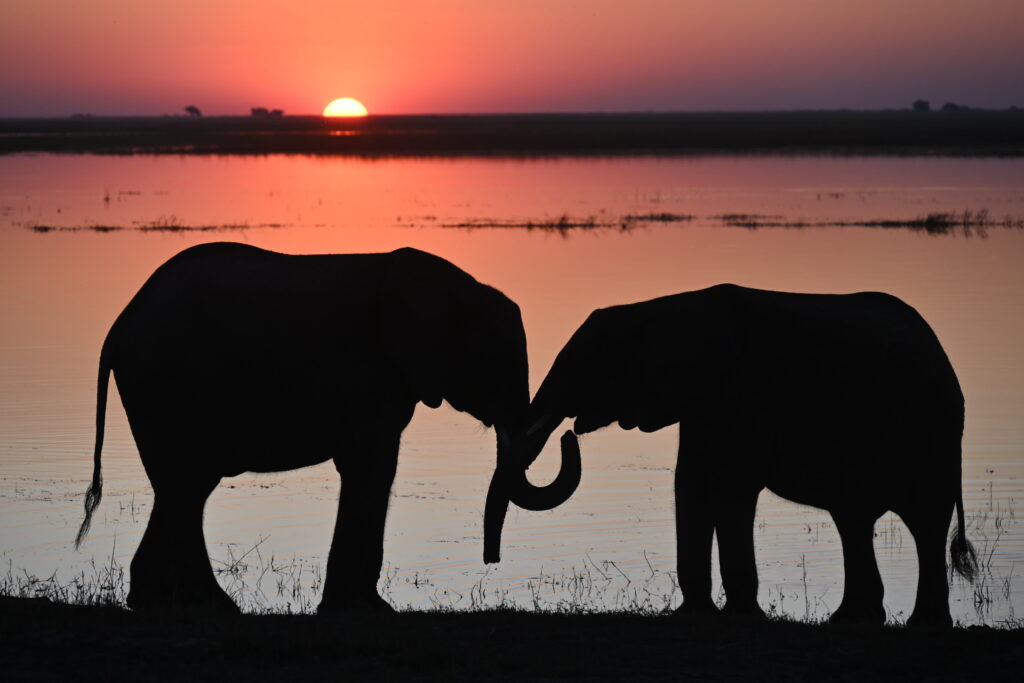
Here is a composite video of some of our Chobe riverfront observations. Hope you enjoy it:
Chobe riverfront composite video (15 minutes)
Photo Gallery:
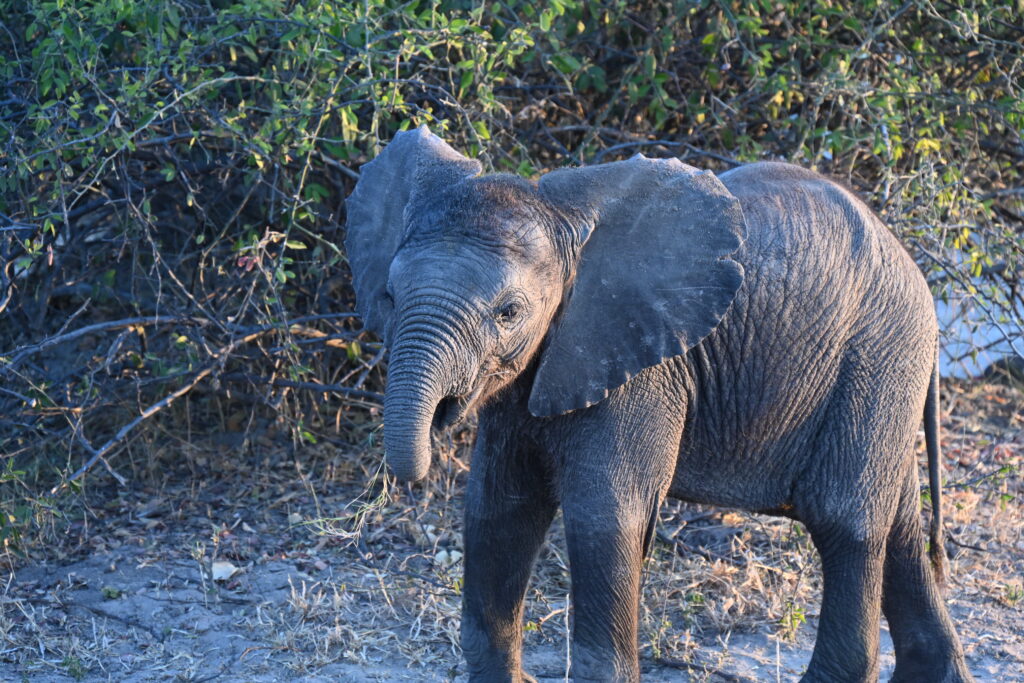
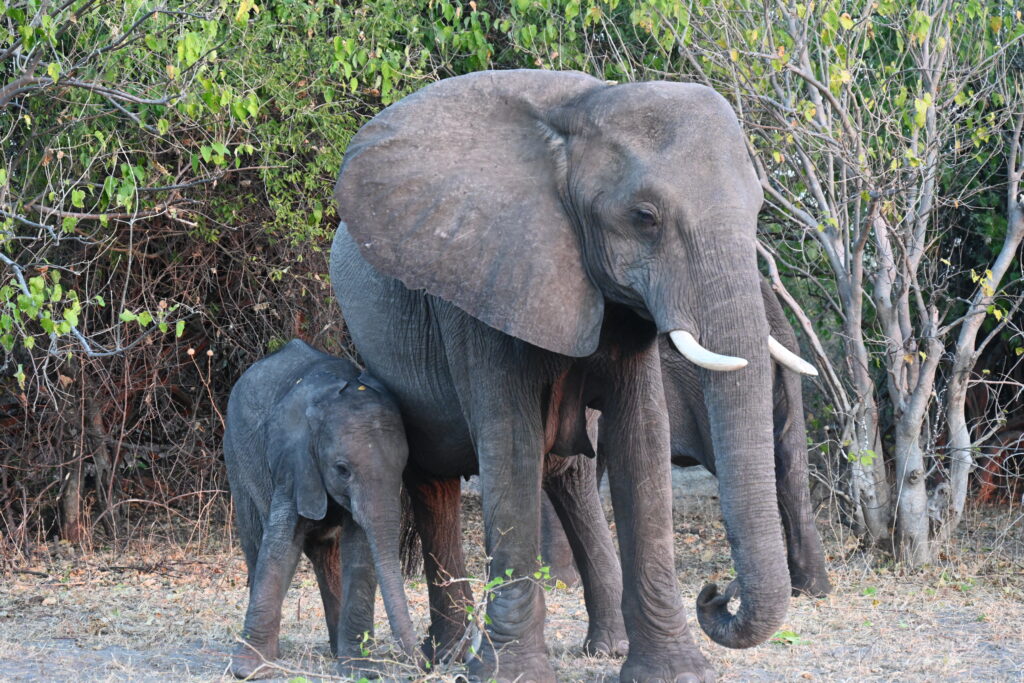
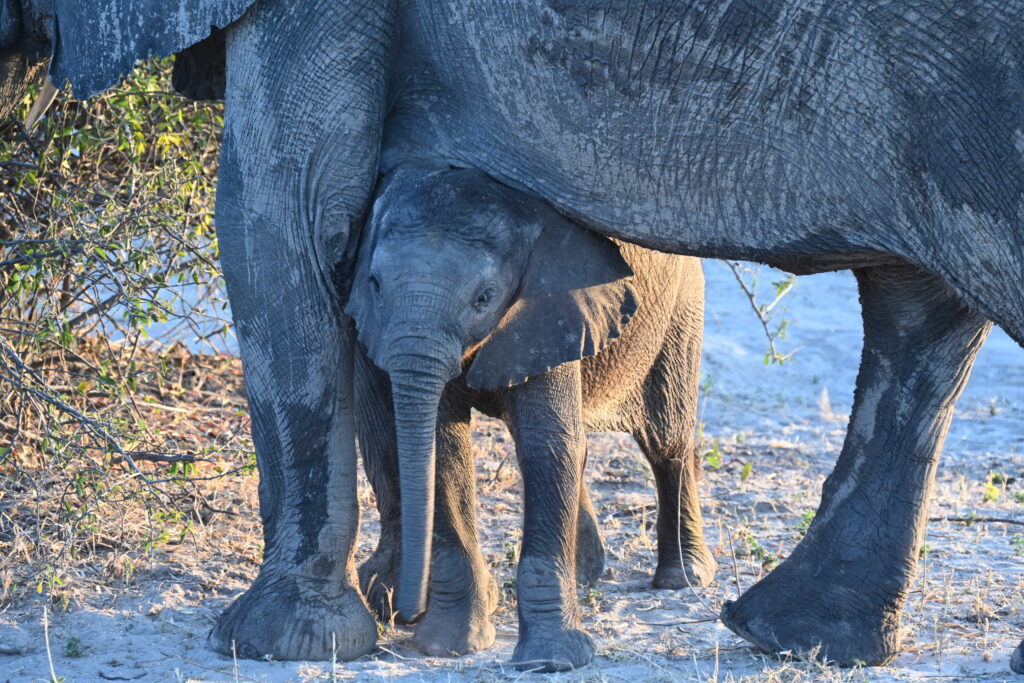
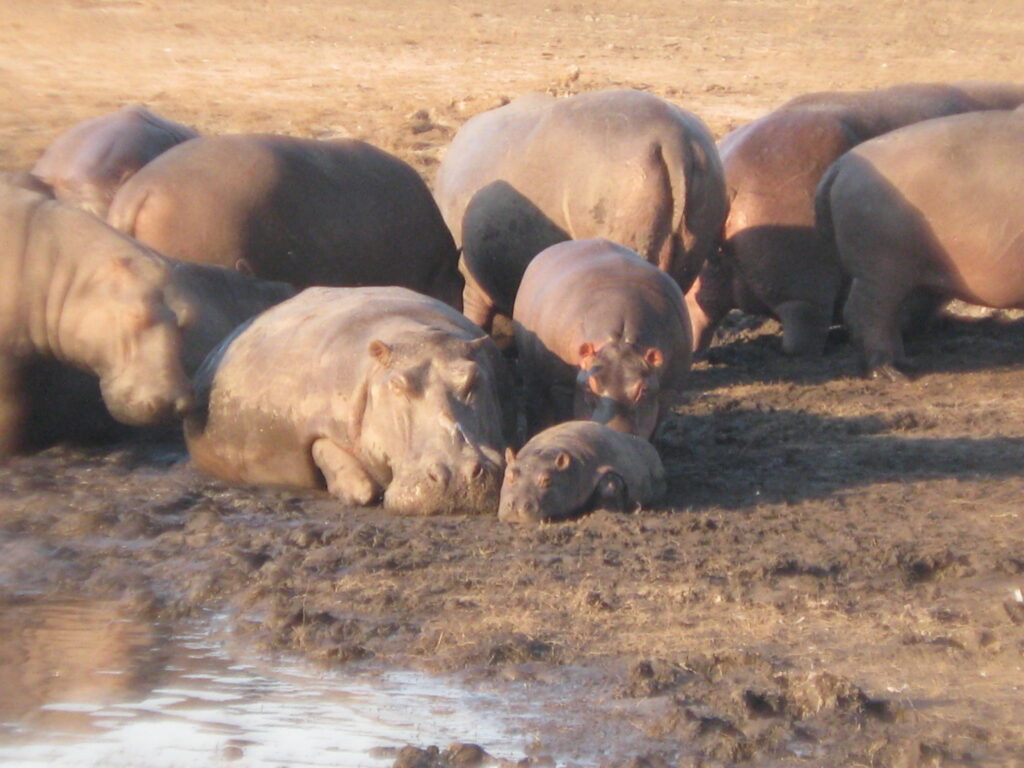

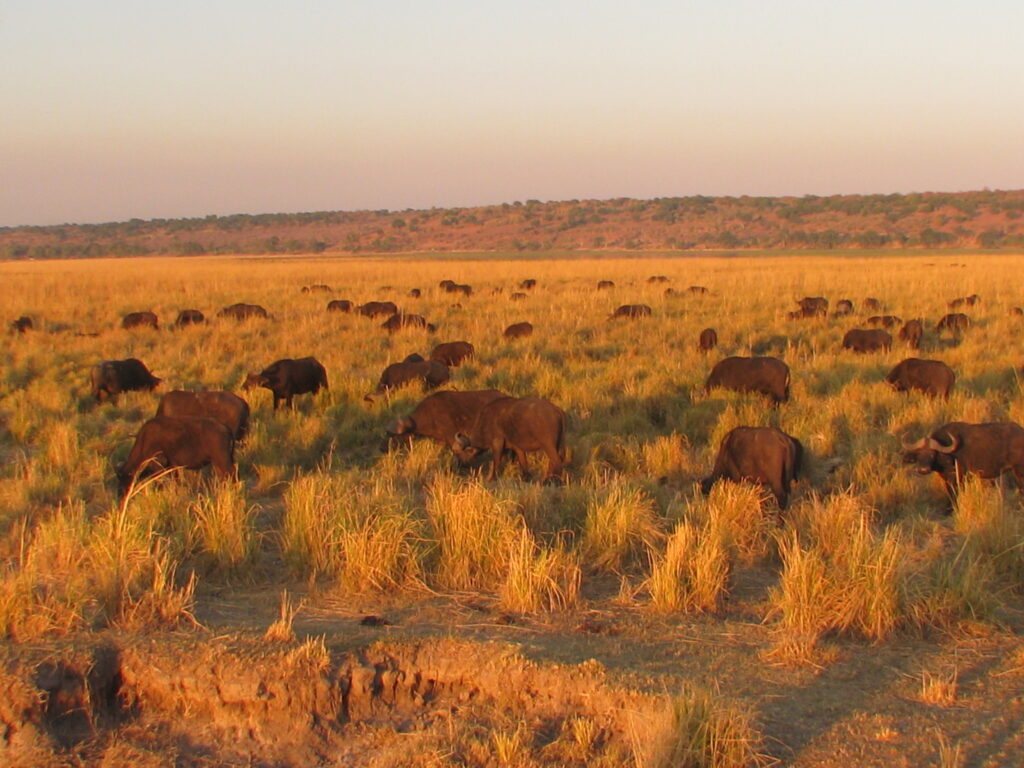
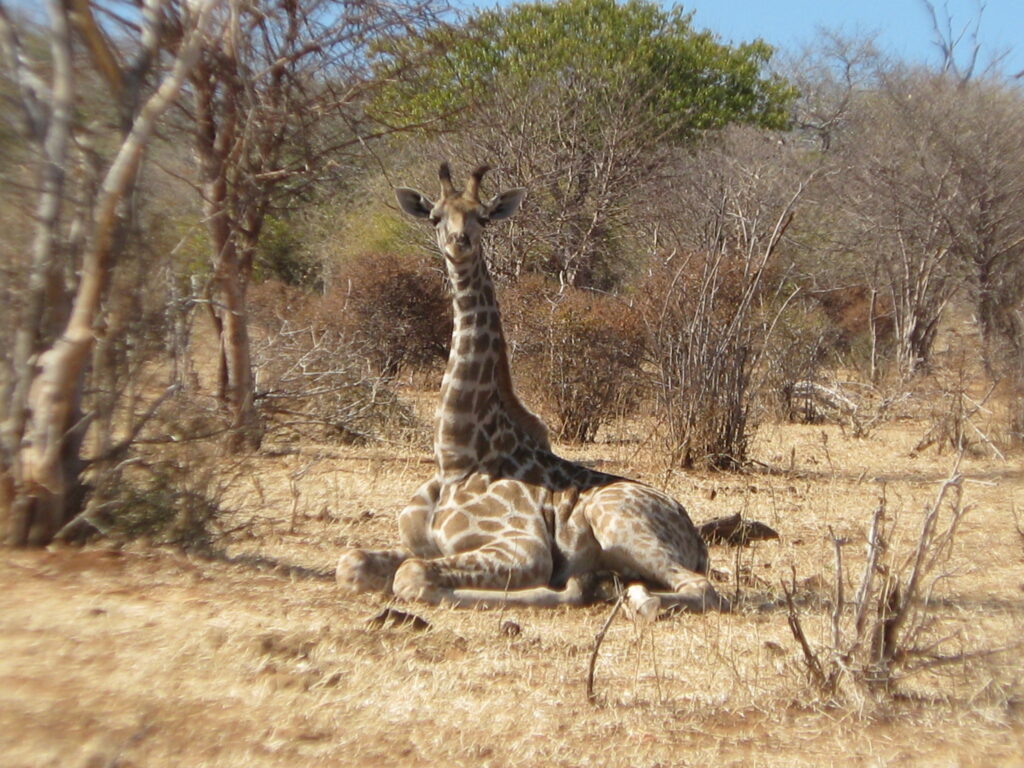
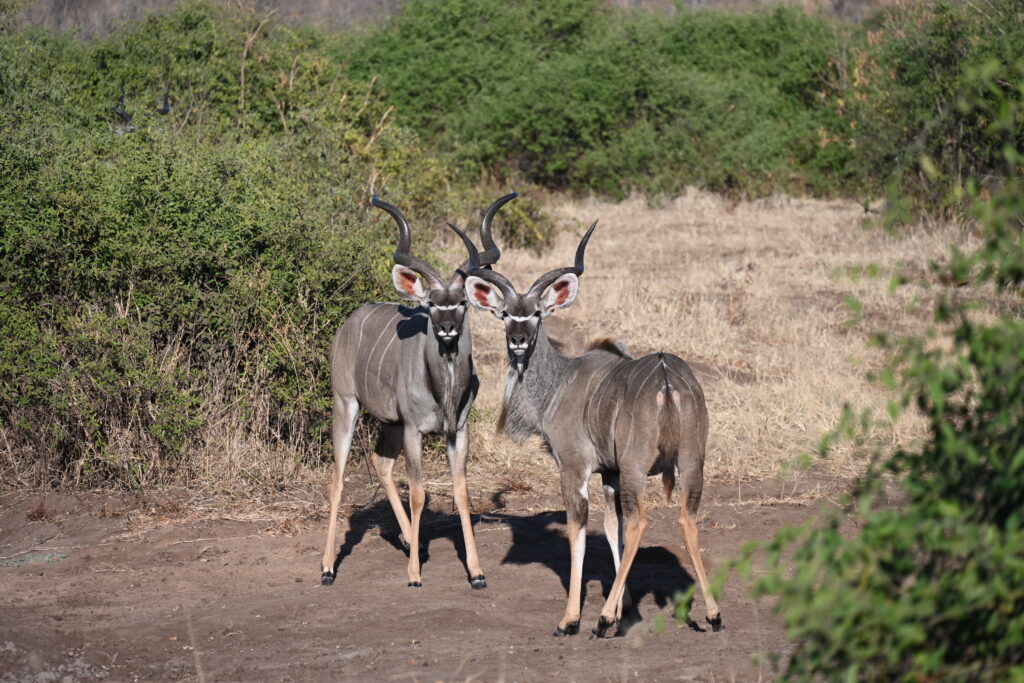
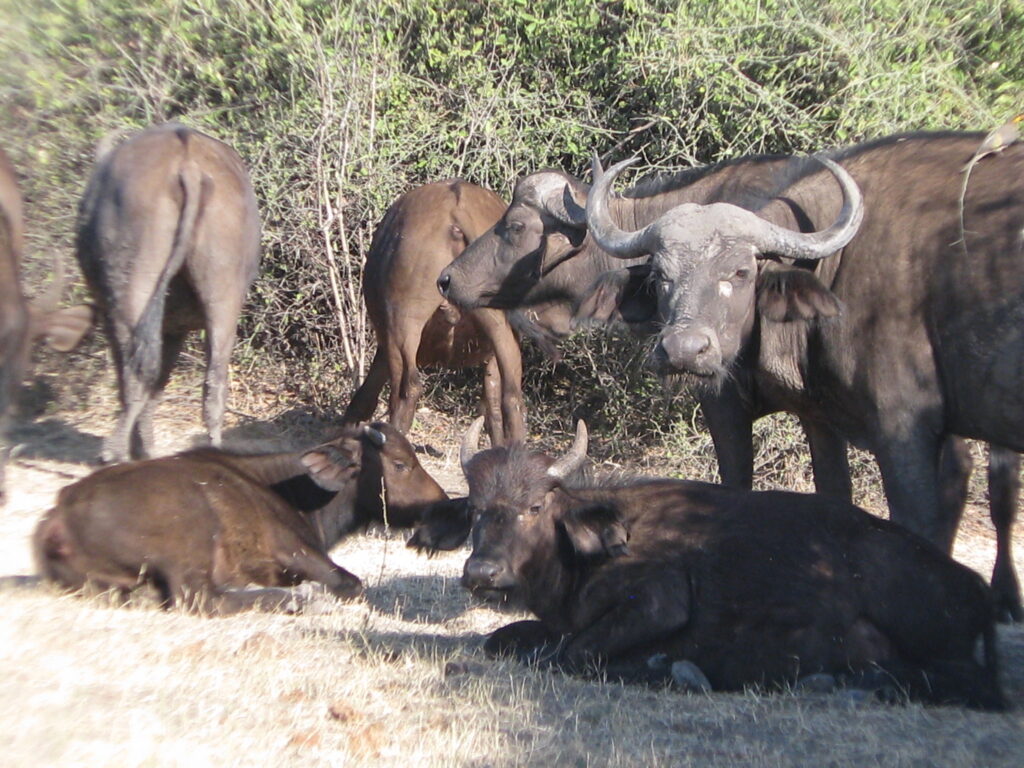
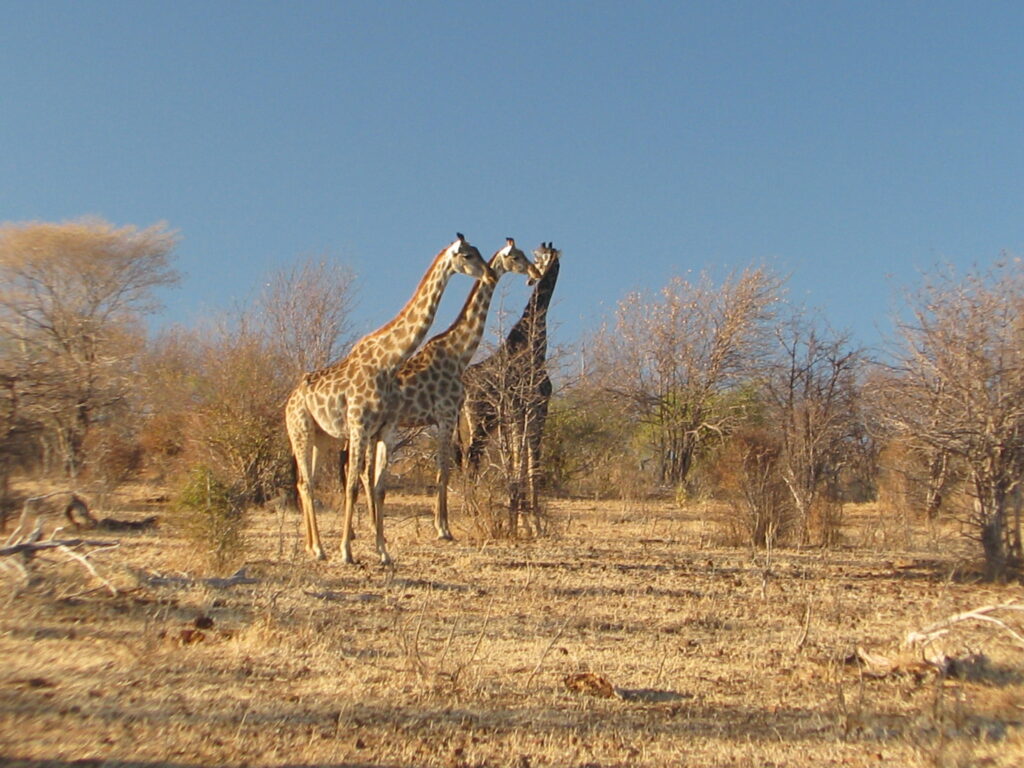
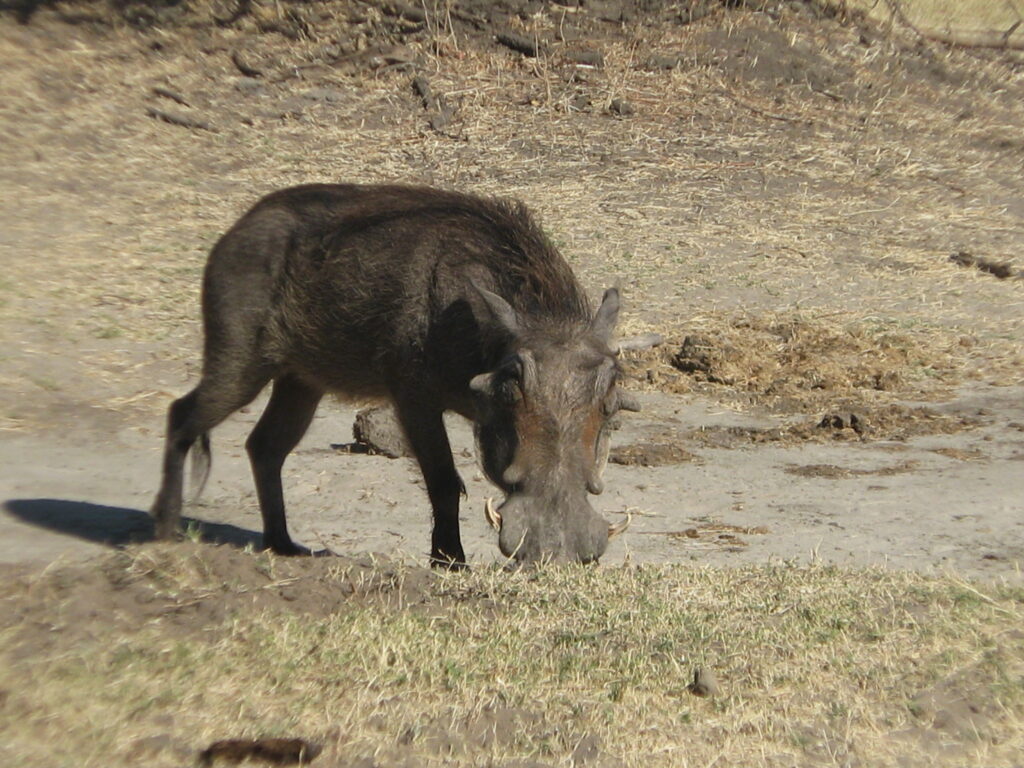
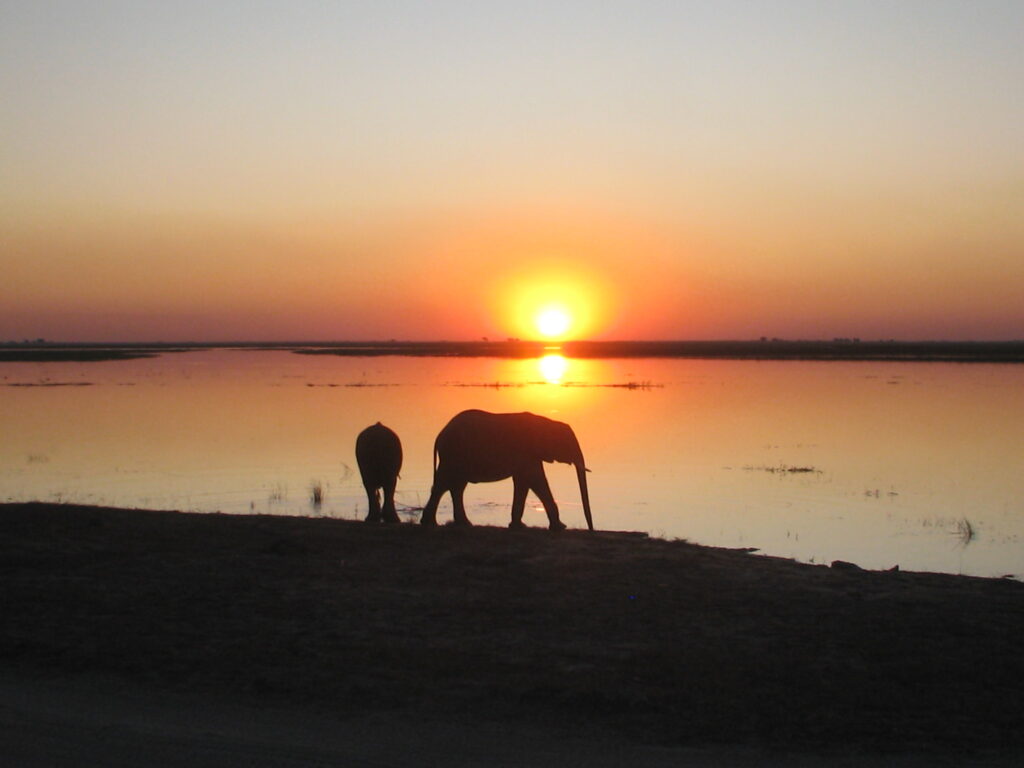

I’ve never seen a giraffe sitting on the ground… love the sunset shots of the elephants
I hadn’t either. The sunset photo was from Mark’s camera and it was a sublime sunset.
I can’t believe the amount of animals and all you’ve see all around you in this trip. Love all the babies.
So sorry your vehicle and campsite got pooped all over. How in earth did you clean that up?
How much longer to you have Mark and Kirsten with you two? Say hello to everyone XXXXOOOO
Yes, the wildlife here is awesome and is why I love it here. For a wildlifer, it doesn’t get much better. The baboon cleanup involved me with a wet sponge wiping down everything and then a really, really good car wash in Kasane. I think we are clean now. Mark and Kirsten leave in 2 days, argh! Will say hi to all from you. Love ya.
Love the leopard shot. Were you playing flute at the time?
🙂
So sorry about the baboons. They should behave better since they are hosts. I hate when parties get out of hand and even the hosts loose control. probably a dance party with the entire neighborhood present. Good thing it wasn’t the elephants hosting the party!
love those experiences of shopping local.
Sounds like you’re having a wonderful time; A magical life experience. Wonderful, you can all share it together
Rick
I hadn’t thought about the consequences of an elephant party in and on the Green Dragon as opposed to the baboons, but in retrospect you are quite right and I should be happy that it was the baboons and not the elephants that decided to be poor hosts. You are such a glass half full person!
Oh Kevin, the experiences you all are having, great and messy ( I know what it’s like to clean up after rude, rowdy critters, yikes!!)! Unbelievable the amount of different and numerous wildlife species you are encountering! And the photography, WOW!! So…. how close are you to them for such unbelievable shots/videos? Powerful zoom lens? They don’t seem bothered by your presence. Thanks again for taking so much time to document and share it all with us…. feels life I’m there, without the need to keep changing my pants 😆! Hugs to you and Nancy, cheers!
Thanks Sherry, glad you can relate. Re closeness of animals, we have been too close for comfort at times, but mostly staying a safe distance. I don’t have a powerful zoom lens so what you are seeing is more or less what I am seeing, with a little zooming in at times. Most animals are not too bothered by our presence, but some are and usually let you know it. Cheers.